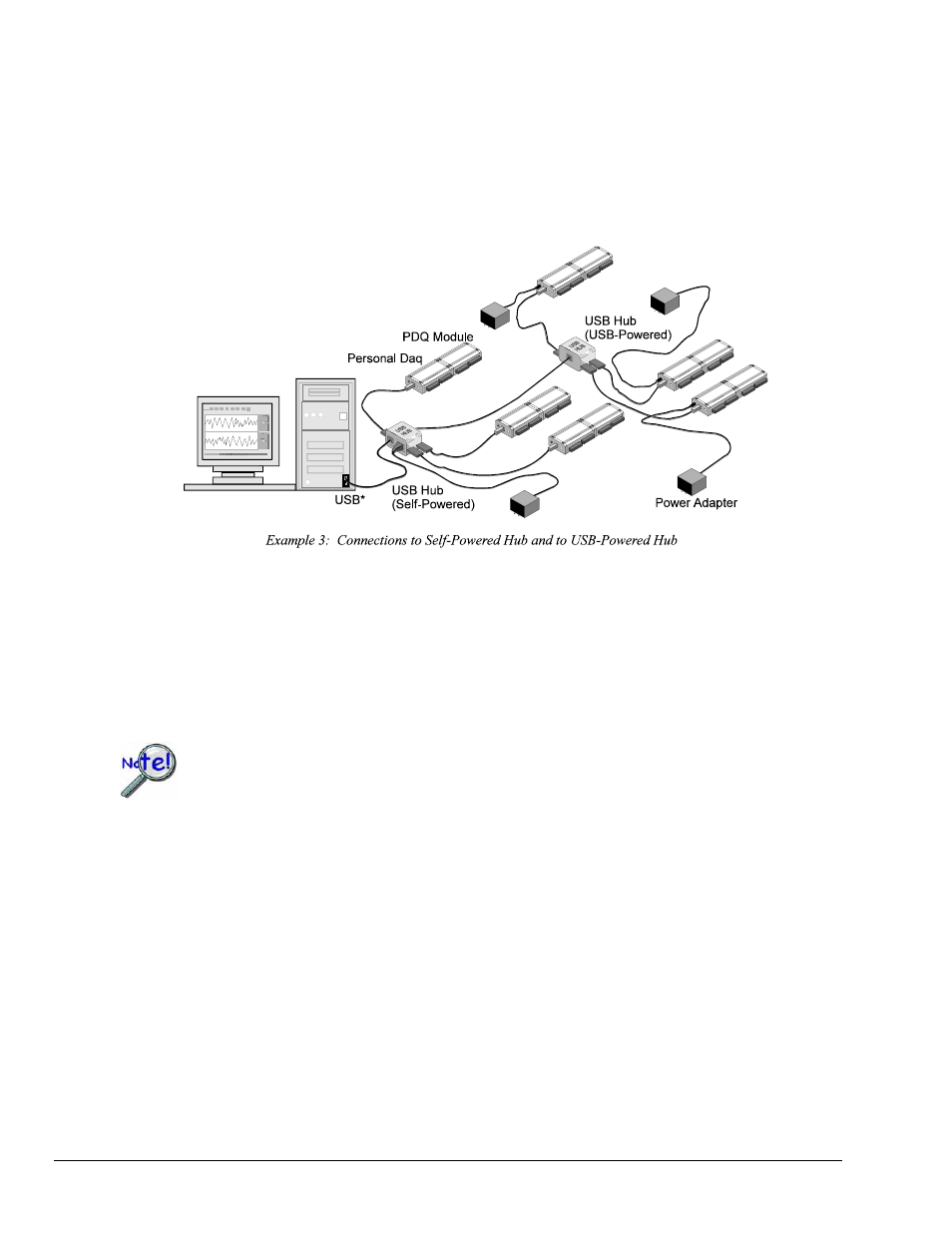Measurement Computing PDQ30 User Manual
Page 4

4
989393
PDQ30 Installation Guide
In example 2, four Personal Daqs and PDQ modules are connected by cable to individual ports of a single USB-
powered hub. Since the hub receives all its power from the computer’s USB, the hub cannot supply adequate power
to the Personal Daq units. Because of this aspect of insufficient power, each Personal Daq is connected to its own
power adapter. The adapters are rated at 6 to 16 VDC, 1A (min.).
Example 3: Connections to Self-Powered and USB-Powered Hubs
When external power is required, as in this example, plug the external power cables into the Personal Daq
units before connecting the Personal Daq main unit to the USB port.
Example 3 illustrates a system that makes use of six Personal Daq units and two different style USB hubs. Three
Personal Daqs and PDQ modules are connected by cable to individual ports of a self-powered USB hub. In
addition, the self-powered hub is connected to a downstream USB-powered hub, which is also connected to three
Personal Daq units and PDQ modules.
Prior to using a hub make sure it is USB2.0 compliant.
USB1.1 will work, but will result in lower performance.
Notice that the Personal Daqs connected to the self-powered hub have no adapters connected to them. This is
because the hub receives external power (in addition to the PC supplied USB power), which is capable of
supporting the downstream devices connected directly to it. In comparison, the three Personal Daqs connected to
the USB-powered hub each require their own power adapter. As in example 2, the adapters are rated at 6
to16 VDC,
1A (min.).
